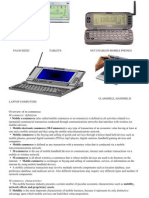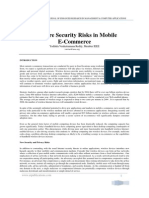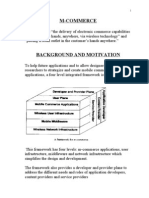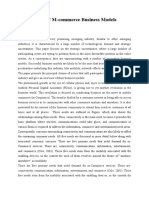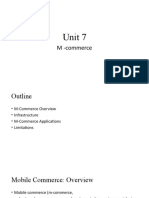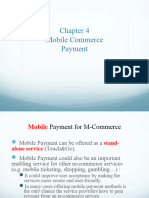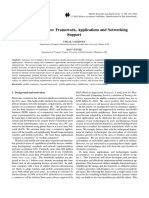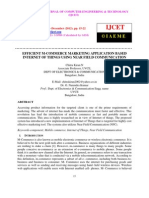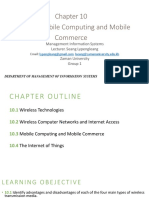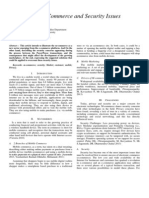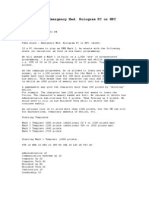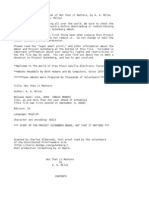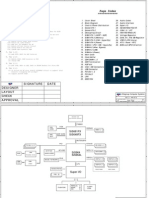M-Commerce: Challenges
M-Commerce: Challenges and Opportunities
M-commerce faces challenges, such as lack of standards, lack of ubiquitous wireless network coverage, technical differences among wireless devices, and security among others. Furthermore, the high prices of mobile services together with the slow access speed have not helped to add to the luster of the mobile environment. Some of the key challenges are as discussed below.
Wireless Constraints
Developing content for wireless devices requires rethinking the Web experience. Wireless content developers need to begin from the ground up, developing content for these new devices. These devices tend to have little real estate available for viewing contentoften as small as 147 characters. Wireless devices also tend to be monochromatic, so images do not render well. Keyboards are difficult to use. Wireless devices tend to have limited CPU, memory, and battery life. Developers and designers need to find new, intuitive navigational techniques to overcome these constraints. Today, the most common navigational technique on wireless is the drill-down capability (Gutzman, 2000). Another constraint of wireless capabilities is the amount of bandwidth available for use of data transmission. This new technology would put a greater burden on current bandwidths available for wireless transmissions. Alternate bandwidths must be opened for transmission.
Infrastructure for Wireless Internet
Currently, the infrastructure to handle smart cards is not generally established (except in Europe). Most industry analysts believe that smart cards will eventually become mainstream for paying in shops and on the Internet, together with a PC. In many countries, smart ID cards will also become fairly wide-spread. One of the problems is that the cost for shops, banks, companies, homes, and PC owners to convert to smart cards makes the process fairly slow. There is an obvious risk that consumers, banks, and companies, after the initial WAPeuphoria is gone, may start to question the rationale behind having multiple payment systems and could begin to put pressure on the mobile-phone makers to force them to adapt their systems to the rest of the world. This is an awkward solution, because it sets unnecessary physical constraints for mobile phones and is also likely to need "software fixes" for each new card variant. Even when used over GSM, operators will simply be supplying a gateway to the Internet, which will be regarded as a standard part of a subscription. Without such support, the m-commerce market could become severely crippled (Rundgren, 1999c).
Security
�Security of data transmissions and commerce being conducted by wireless devices is a great concern for businesses and individuals today. The wired Internet is vulnerable to interception or compromise by unauthorized users' attacks, because wireless LAN/WAN networks use a publicly available spectrum. Individuals have been wary of using Internet commerce for fear of having their credit card used improperly. A prerequisite for the success of mcommerce applications is the legal recognition and nondisputability of any transactions effected. The mobile digital signature may be an answer to this problem (Brokat, 2000). New smart cards, available for wireless communications applications, will enable secure transactions via the Internet. The wireless identity module (WIM) will guarantee a new level of security by giving mobile Internet users the ability to safeguard their transactions through encryption and digital signatures. Compliant with the WAP, the WIM device will allow mobile network operators and service and content providers to begin implementing mcommerce services, such as secure information access, online banking, and the purchase of goods and services. The WAP-powered identity module supports "logical channels," enabling users to pass from one application to another without losing transactions that have already been carried out. The card offers two forms of protection: client-to-server authentication using ultralong keys, and the ability to generate the digital signature required to secure the application. Unlike an encryption-enabled browser, the secret keys handling the encryption remain in the user's smart card, by definition a tamper-resistant device, and allow it to be removed and transferred to other devices (Electronic Buyer's News, 1999). One advantage of smart card IDs is that they are extremely hard to forge. To crack a private key stored in a smart card or guess its value based on a corresponding public key is very difficult. A PIN code is added as an extra security measure to avoid abuse if the card gets stolen or lost. An ordinary ID card can only be used for identification, while a smart-cardbased ID card can also be used to digitally sign documents and transactions in a nonrepudiated way (Rundgren, 1999a). However, the security measures typically implemented with a wireless application delivery approach can add to the costs and make the computing system more complex to administer and use.
Privacy
Privacy is another issue not resolved by the growth of m-commerce. The new connectivity of consumers to the Internet is a great convenience for consumers, but it also comes at a price. The price is the value of privacy that individuals lose, as they become hooked-up to the Internet. One part of privacy is that the development of smart cards for use with cell phones is convenient for consumers wanting to buy or sell. However, much personal data is enclosed on the card, and it could be used for the wrong purposes. Many cell phones can be equipped with a global positioning chip that can identify the location of the user. This new technology would be good for emergencies but could also be used against the individual for monitoring purposes or other activities. These are issues that still need to be addressed and have been downplayed by current technology developers. Privacy is one of several issues that complicate the long-term timetable for developing location-based m-commerce. Another issue is the level of direct access marketers will have to customers, because the Internet will be located with the individual customer and can be contacted by voice, e-mail, or Internet (Vujovesic & Laberge, 2000). Next, we discuss the opportunities made available by mcommerce and wireless communications.





